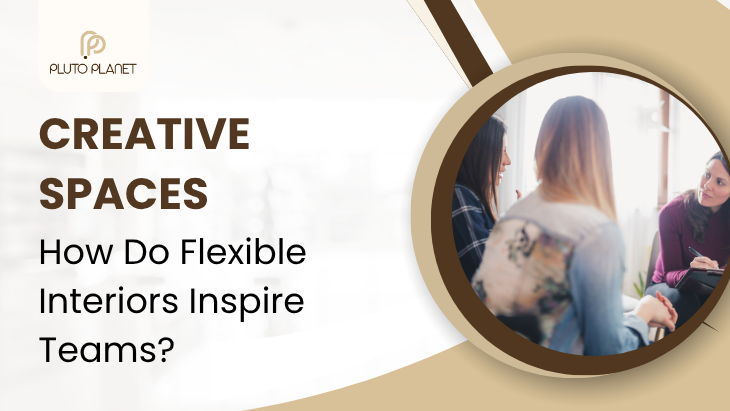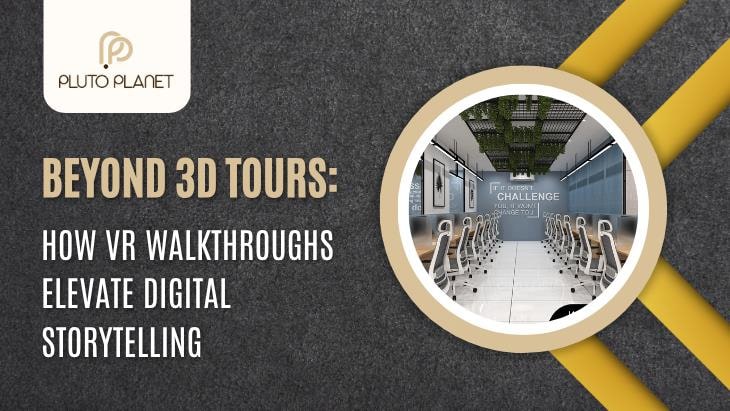The contemporary working environment is changing so rapidly. Further into the year 2025 and beyond, businesses are redefining the manner and place of how employees work. Hybrid arrangements, online work, and working remotely are not a luxury anymore but a necessity. It is against this backdrop that office interior design has become an important aspect that determines the manner in which organizations recruit and retain the best talent.
An office is not just a physical location anymore but a breathing, living embodiment of company culture and values. It informs prospective employees of what they are getting into even before they commit even to a contract of creativity, collaboration, innovation or care. The modern office design of the present day is constructed upon the same purpose, making people feel inspired, valued, and motivated.
Future-ready offices, however, do not merely consist of the introduction of new technology. It is an art of creating environments in which employees will flourish emotionally, psychologically, and career-wise.
The Relation between the Workplace and the Attraction of Talents
The professionals of today do not accept jobs but experiences. Salary and benefits are necessary, but the physical environment is important in terms of how a company is perceived by the candidates. An environmentally planned office is more than an expression of culture; it conveys to its inhabitants how much they are appreciated in an organization.
Such issues as a messy and old workspace can cause stagnation, and an open, clear, and moving space is the stigma of innovation and development. The direct influence of office interior design on first impressions is that impressions are important in the competitive talent market.
As an example, technology giants such as Google and Meta have traditionally used design as the tool to attract talented individuals. Their workstations are adaptable, and relaxation pods and colorful color schemes that promote cooperation and comfort are available in their offices. Likewise, innovative companies and start-ups employ the elements of modern office design, including open lounge areas, joint brainstorming zones, and biophilic details to develop a feeling of vitality and identity.
Employees, in particular Millennials and Gen Z, want places of work that are flexible, well, and connected. To them, office design is not a location to work in but an important component of work experience.
Essentials of Future-Ready Office Design
1. Malleability and Adaptability
Flexibility is required in the future of work. Offices in the current generation are shifting towards modular designs instead of the fixed cubicles, which are capable of adapting to the demands. The flexibility of the desks, movable partitions, and multipurpose space enables the teams to change the setting of their workspace to hold a meeting, collaborate, or work individually.
The hybrid workstations also allow the employees to easily switch between remote work and in-office work. This flexibility does more than just add functionality; it gives one a feeling of empowerment—the ability to control his/her work process.
2. Technology Integration
The key element to any modern office design is technology. Smart lighting and climate control systems, high-tech conference systems, and similar means are now digital, making the workplace more efficient and connected.
Meeting rooms and work areas that have IoT devices, wireless charging zones, and interactive screens facilitate easier communication between the in-house and remote working teams. Technological design does not simply enhance productivity, but it makes one feel like being in a place of innovation.
3. Sustainability and Green Design
Environmental responsibility is not an option any more. The introduction of eco-friendly principles into the office interior design by the modern business becomes a more common practice.
Sustainable offices have energy-efficient lighting, recycled materials, indoor plantation and low water usage systems. Biophilic design (including elements of nature, such as wood texture, plants, and sunlight) decreases stress levels, enhances air quality, and elevates the mood.
A sustainable working environment also enhances the reputation of a company to the talent who cares about the environment, as it demonstrates an interest in a healthy future.
4. Wellness-Centric Spaces
The future-ready office design is centered on employee well-being. The ergonomic furniture, natural lighting, and noise-free areas are used to minimize fatigue and enhance concentration.
Even contemporary offices have relaxation spots, meditation rooms or even fitness corners so as to promote movement and breaks. Organizations are showing their actual concern about their people by giving wellness first priority, and that is an attraction to the best talent.
5. Inclusivity and Accessibility
An exceptionally contemporary workplace is non-discriminative. The design should be inclusive of different physical, sensory, and cognitive abilities such that all feel included and accommodated.
This involves broad aisles, movable furniture, variable lighting and soundproof areas for various working ways. Design-based inclusivity will improve the cooperation and contribute to the formation of a more robust and more coherent team culture.
The Implementation of the Role of Office Design in Employer Branding
Office spaces are not only functional anymore, but they also tell stories. All design aspects, including color selections and furniture selections, send the message of the ethos of the brand.
A firm that appreciates creativity may have open, artistic areas with cooperative areas and graffiti. In the meantime, a financial company can opt to have a smooth, minimalist interior that portrays professionalism and credibility.
The design of the office interiors has a direct effect on the way the existing and potential employees view the company. Having a physical location that supports your mission and values creates authenticity, which is very important to the people of the workforce today.
Besides, an office that has been designed appropriately may act as a silent recruiter. LinkedIn, Instagram, and other social media platforms are flooded with posts of workspace envy. An attractive office will be an intrinsic branding instrument that provokes curiosity with the potential recruiters.
Establishing Collaborative and Innovative Space
Teamwork has turned out to be the pillar of contemporary businesses. Nevertheless, collaboration can not occur by chance, but it is created with deliberate planning.
Practical areas, brainstorming booths and breakout spaces facilitate ad hoc communication and unplanned exchange of ideas. Contemporary office designs embrace the use of innovative workspaces such as open lounges, writable walls, and co-working tables, which bring power and enthusiasm.
Meanwhile, balance plays an important role. Workers also require areas of silence so that they can focus on their tasks. The offices of the future are able to achieve that balance—with social oomph as well as individual resting spaces so that each employee can get the perfect working pace.
It is also designed to collaborate, which also implies designing for culture. Innovation is a natural result when individuals identify themselves with their space and one another.
The Effect of Design on Retaining Employees
Investment in office design is literally payoff. Research indicates that employees who feel safe and motivated at their work area are more engaged and more creative and so are more loyal.
Indicators such as the level of productivity, rates of absenteeism and employee satisfaction surveys can give quantifiable information on the impact of design on performance. Firms with an office redesign usually experience low turnover and an increase in morale in a few months.
Application of data-driven methods can assist organizations to constantly transform their contexts. The most effective spaces can be noticed by regular feedback sessions and observation, and further improvement of the office interior design strategy can be made.
It is much more likely that the employees will remain with the company and develop when they realize that their input and comfort are appreciated.
Conclusion
The talent environment will also be highly competitive in 2025, and companies will no longer be able to attract the best performers by using only salary packages or benefits. The contemporary employee would demand purpose, flexibility and contact—and most of that would start with the atmosphere in which they labor.
Being future-ready is not only a question of stylish furniture or futuristic technology; it is about creating the spaces in which people can feel inclined to put their best foot forward to work. An office that is designed communicates trust, innovation and care values, which are something that is very close to the modern-day professional.
When wisely implemented, office interior design is a competitive edge—defining brand, motivating spirit and inspiring future prosperity. The finest offices not only accommodate workers but also cultivate communities, generate ideas and create long-term loyalty.
We are of the opinion that great work is based on great design at PlutoPlanet. We make modern office designs that make your brand, empower your team, and build your business's future of work. Since, after all, design is not only a matter of space, it is also a matter of people.









Leave a reply